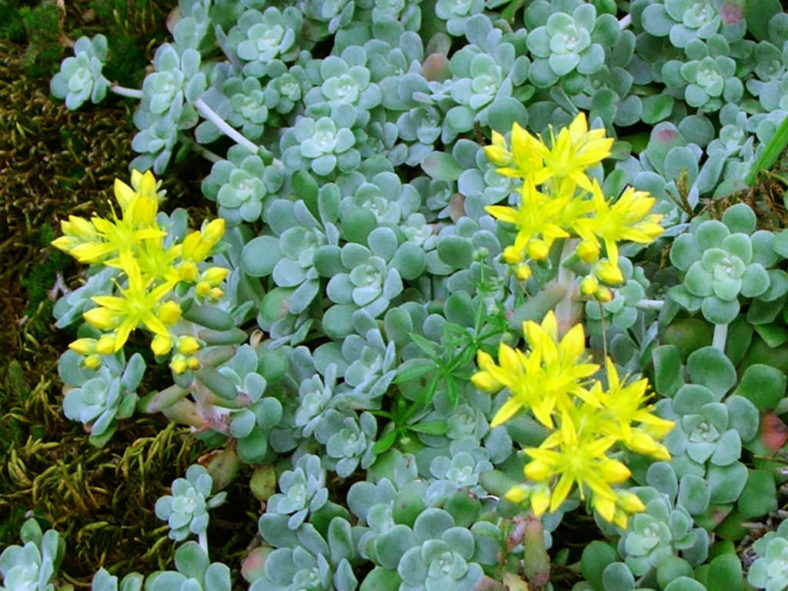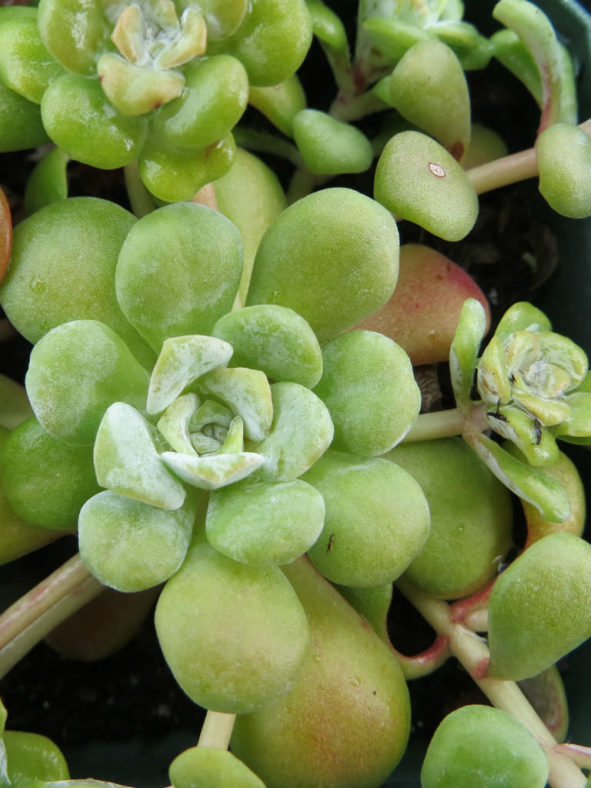Scientific Name
Sedum spathulifolium Hook.
Common Name(s)
Broadleaf Stonecrop, Colorado Stonecrop, Pacific Stonecrop, Spatula-leaved Stonecrop
Synonym(s)
Echeveria spathulifolia, Gormania spathulifolia
Scientific Classification
Family: Crassulaceae
Subfamily: Sempervivoideae
Tribe: Sedeae
Genus: Sedum
Etymology
The specific epithet "spathulifolium" (pronounced "spath-yoo-lif-FOH-lee-um") means "spoon-leaved" and refers to the shape of the leaves of this species.
Origin
Sedum spathulifolium is native to western North America, from British Columbia to southern California. It grows in various types of rocky habitats, including coastal and inland hills and mountains.
Description
Sedum spathulifolium is a quite variable succulent plant that forms mats of basal rosettes growing from a system of rhizomes. It can reach a height of 4 inches (10 cm). The basal leaves can measure up to 0.8 inches (2 cm) long and are sometimes coated in a waxy, powdery-looking exudate.
The flowers are small, star-shaped with yellow petals, and appear on short, erect stalks in summer.

Varieties of Sedum spathulifolium
- Sedum spathulifolium var. pruinosum
- Sedum spathulifolium var. spathulifolium
Cultivars of Sedum spathulifolium
How to Grow and Care for Sedum spathulifolium
Hardiness: USDA hardiness zone 3a to 9b: from -40°F (-40°C) to 30°F (1.1°C).
When growing Sedums, keep in mind that these plants need very little attention or care. They will thrive in conditions where many other plants thrive, but also do just as well in less hospitable areas. They are ideal for that part of your yard that receives too much sun or too little water to support the growth of other plants. A common name for Sedum is Stonecrop because many gardeners joke that only stones need less care and live longer.
Sedum is easily planted. For shorter varieties, simply laying the plant on the ground where you want it to grow is usually sufficient to get the plant started. The plant will send out roots from wherever the stem touches the ground and the root itself. If you would like to ensure that the plant starts there, you can add a very thin layer of soil over the plant.
You can break off one of the stems for taller varieties and push it into the ground where you want to grow it. The stem will root very easily, and a new plant will be established in a season or two.
See more at How to Grow and Care for Sedum.
Links
- Back to genus Sedum
- Succupedia: Browse succulents by Scientific Name, Common Name, Genus, Family, USDA Hardiness Zone, Origin, or cacti by Genus
Photo Gallery


